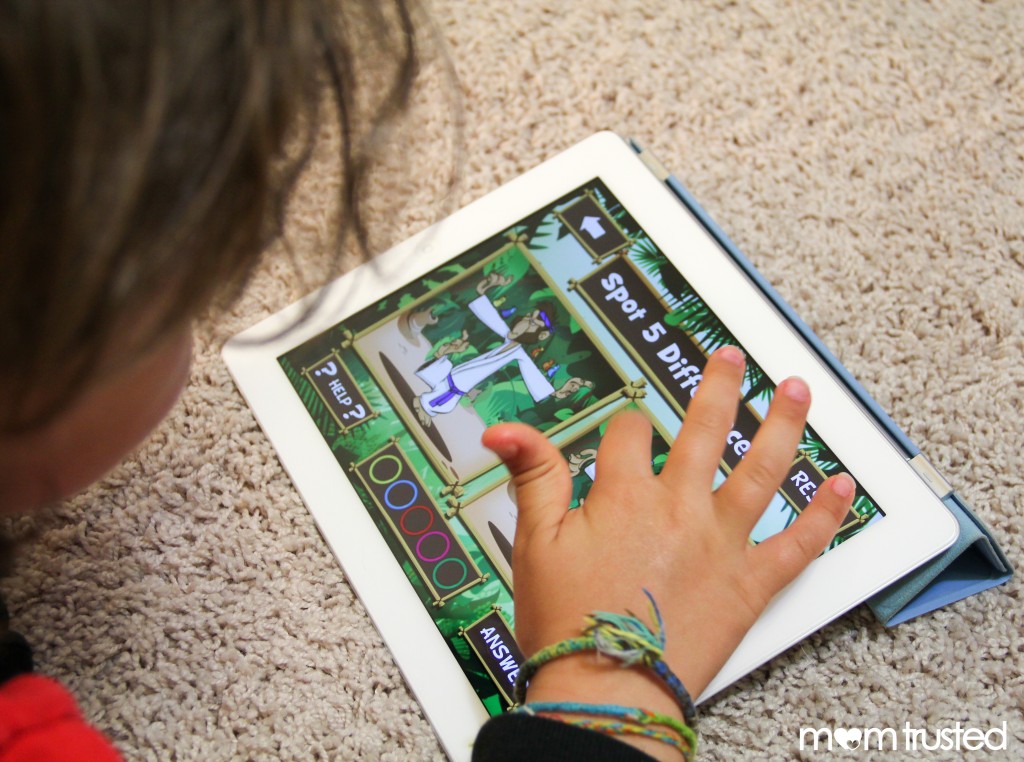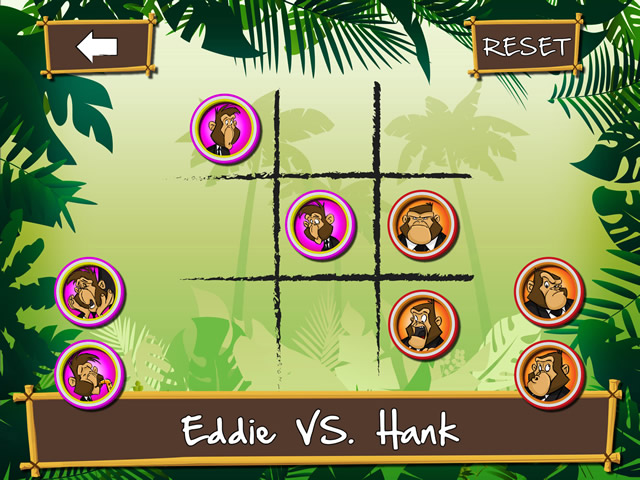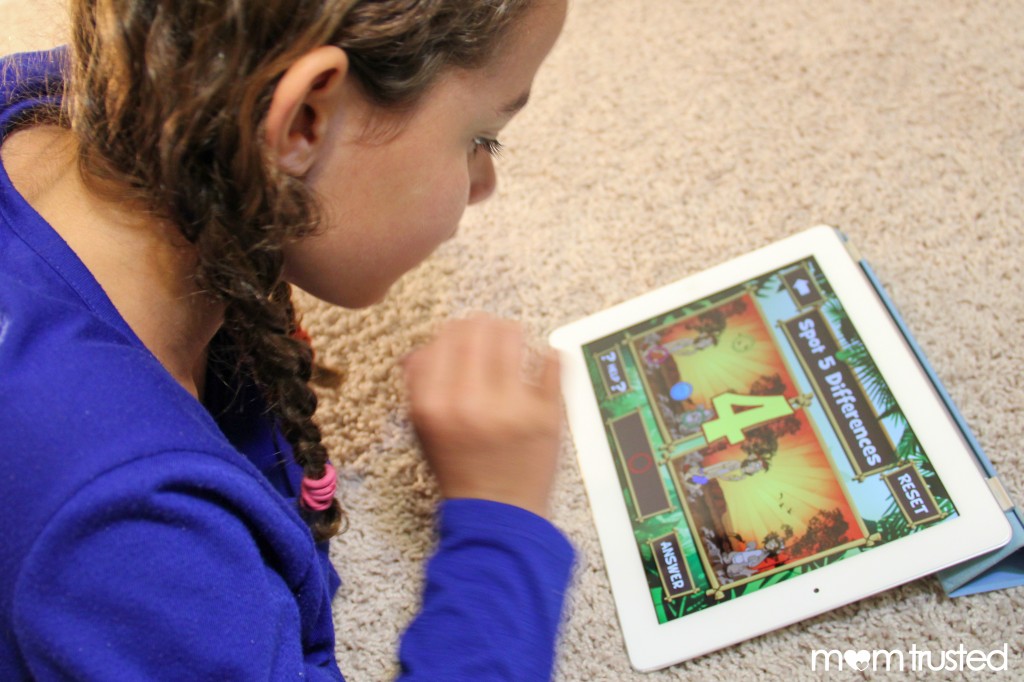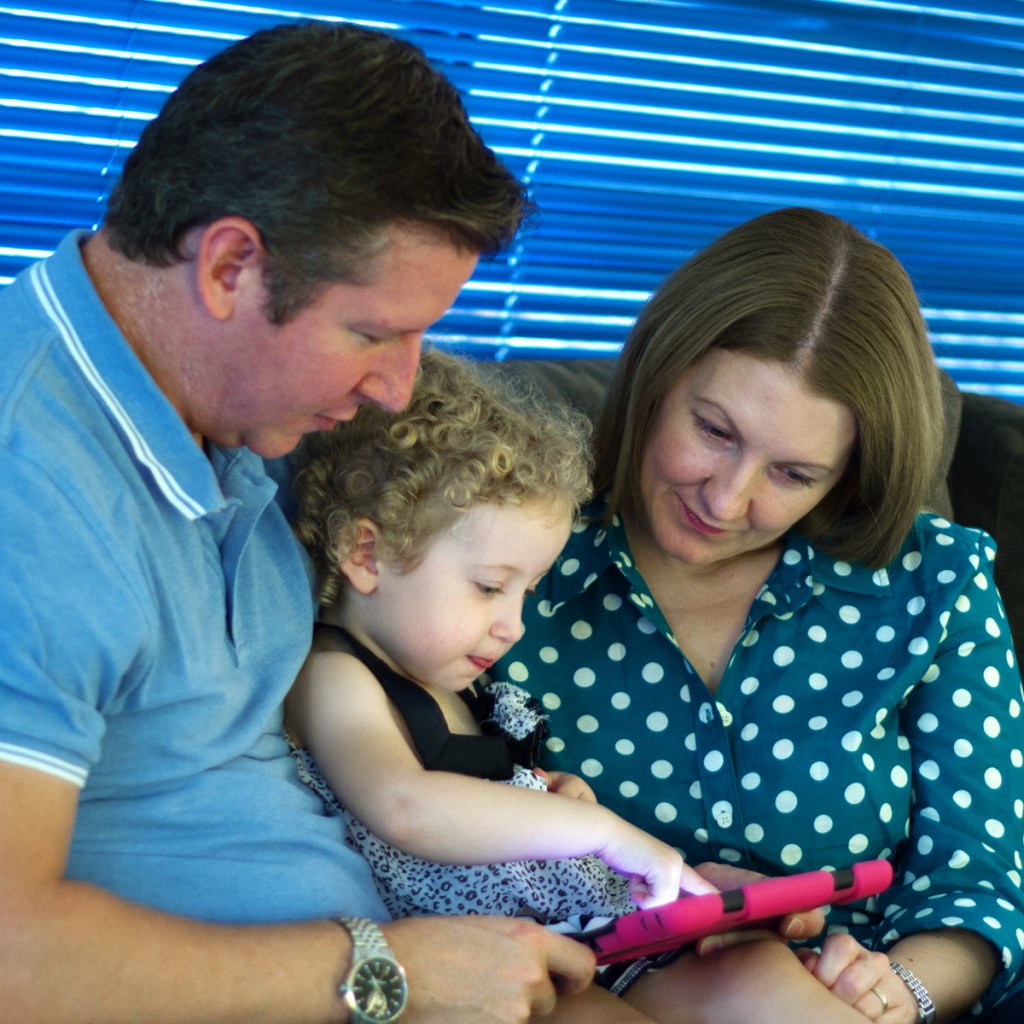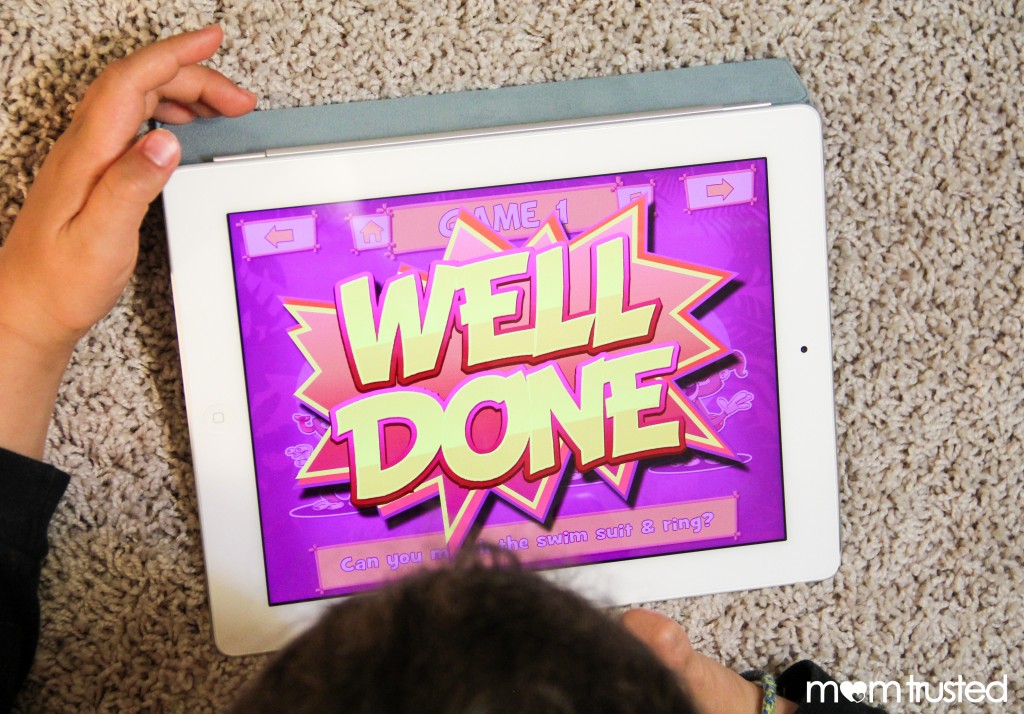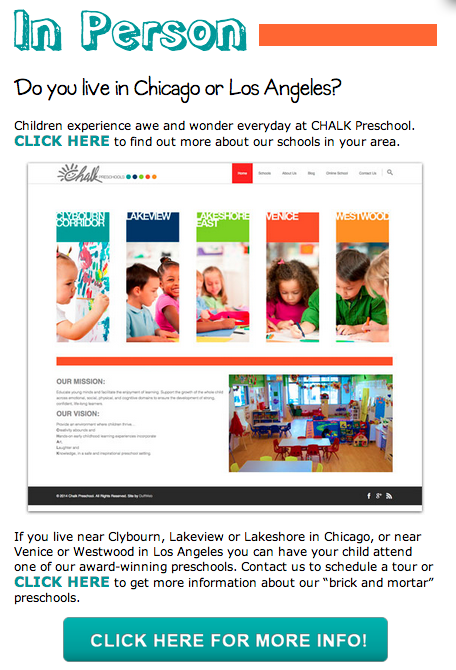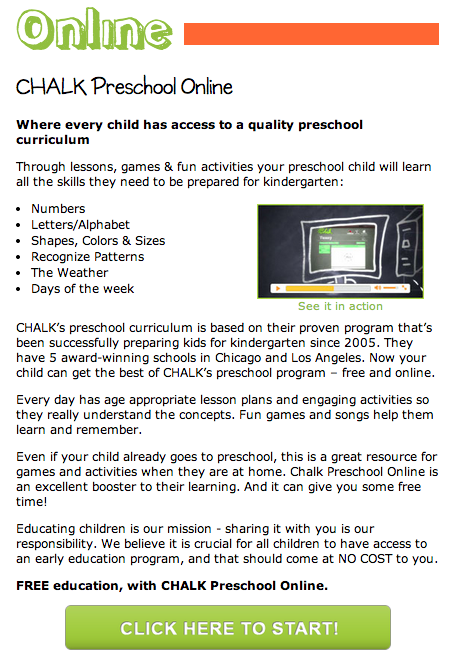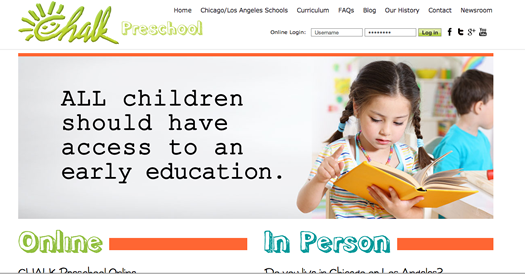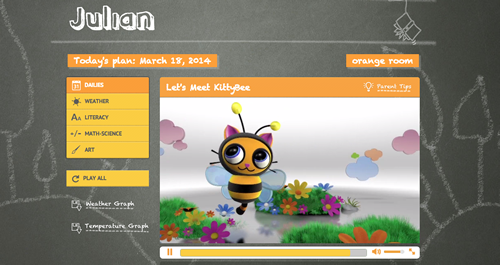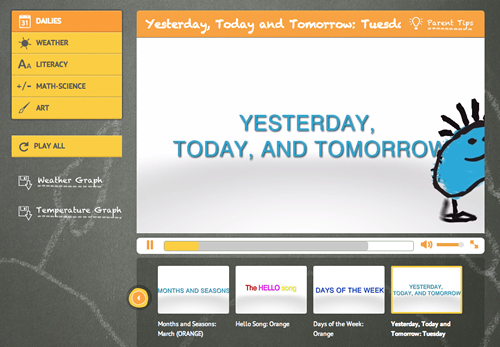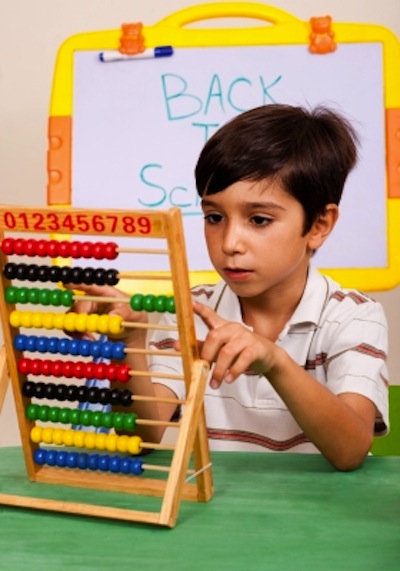Twisted Logic: Brain Boosting Apps for Kids
New app producer Twisted Logic produces one-of-a-kind gaming apps for kids of all ages. The small company is family-run and clearly a passion project, based on the business smart and tech savvy husband and wife team. Together, they create fun, interactive apps that cater to learning as much as they inspire a good time.
So far, Twisted Logic has released three apps, all compatible with iOS and Android products. Their released gaming apps include:
- Monkey Match: Monkey Match is a matching and memorization game with lively illustrations. It helps kids learn by matching shapes, colors, sounds and more. Plus, every level is goal-oriented. It establishes a goal at the beginning of the level and rewards the player after the goal is obtained, all in all making for an engaging game. [itunes download] [android download]
- Monkey Spot the Difference: Monkey Spot the Difference helps little ones hone in on their observation and concentration skills. They look at two images and must compare and pick the differences out of each one. It’s a great game to play with the whole family. [itunes download] [android download]
- TicTacToe Monkeys: TicTacToe Monkeys gives the classic game a fun twist. Players must choose their winning monkey and then duke it out on the Tic Tac Toe board. This game of strategy definitely puts a cute twist on the classic we all grew up playing. It’s a game for all ages. [itunes download] [android download]
In addition to creating fun and educational games, Twisted Logic wants you to feel good about letting your child on their apps. So far the company sticks to an internet safety code for their kids apps that leaves us wanting more from our other kids apps. When downloading you can be sure there are:
- NO In-App Purchases
- NO Third-Party Ads
- NO tracking or collection of user data
- NO requests for personal information
- NO links to the web or social networks without entering a Parent Gate
The creative geniuses behind Twisted Logic make up quite a team. The Head Creator is a creative tech guru who tapped his passion for animation and design and turned it into colorful, creative gaming apps. The Chief Strategist heads the business end of the company, making business-savvy decisions and making sure the company and its workers stay on track. The best part? This family-run business knows exactly what kids want because their daughter Mackensie is the “Senior App Tester” for the company. Her bio reads, “From about the age of 10 months Mackensie has been learning the ins and outs of Apple devices. Currently having her own iPad and two iphones (handed down from Dad) isn’t good enough and she’s always after Dad’s newer devices. Now at the age of 2 years old, finding her way around mobile devices is a breeze. She can even teach her Mum a thing or two…”
Twisted Logic brings creative, colorful apps to the market, developed in a family environment and tested by their own daughter and family friends. This team knows what kids and parents want in an app! Download these apps today!
CHALK Preschool: In-Person or Free Online Options for Early Education
CHALK Preschool is one of the most technologically advanced early education programs of its time. Its online program is totally convenient and totally free. If parents prefer a more traditional, in-person option for their child, they’re invited to opt into one of CHALK’s five in-person preschools, located in Chicago and Los Angeles.
The CHALK Preschool Mission
CHALK Preschool believes that every child deserves access to an early education. That’s why, in addition to offering several in-person locations in both the Chicago and Los Angeles areas, it’s also available to preschoolers around the world through CHALK’s online preschool program. And because CHALK knows how vital those first few years of learning are, it offers its online curriculum for free.
CHALK’s Teaching Philosophy
Teachers at the in-person centers believe in a warm, welcoming environment where children learn by embracing the arts and achieving classroom goals, based on studied learning standards. CHALK focuses primarily on a hands-on learning style. Even the online courses are about much more than screen time. This hands-on teaching approach means preschoolers learn both inside and outside, with both the online and in-person options. The curriculum focuses on primary learning objectives centered on literacy, math and science. But CHALK goes beyond the books. Preschoolers in the program hone their creative skills through art projects and perfect motor skills through music and dance activities.
The Nitty Gritties of CHALK
The online courses are available on regular computers, as well as on smartphones and tablets. While age varies, based on the needs of each individual child, most are ready to join the preschool program somewhere between the ages of two and five. While they’re first separated into classes by age, if a parent feels it’s not a perfect fit, staff members are happy to switch children to more suitable class groups.
CHALK’s History
The idea for CHALK was first established in 2004, but the first center went up in Illinois the following year. For the next few years, more and more centers were opened in the Chicago area and in 2009, the first Los Angeles CHALK Preschool was established. Since then, the centers have continued to multiply in both cities. Because the founders of CHALK wanted their preschools to reach across the country, and even the world, they decided to launch the online preschool option. With this digital curriculum, even those who don’t live in Chicago or Los Angeles can still reap the benefits of a CHALK early education.
Parents are welcome to enroll their child in the online program at any time, simply by visiting CHALK Preschool’s website. In-person programs accept applicants year-round, so Chicago and Los Angeles-based families are also welcome to enroll at any time.
UPDATE 1/26/15: CHALK’S FREE SITE IS NOW AVAILABLE AT WWW.FREEONLINEPRESCHOOL.COM
Why We Love CHALK Preschool Centers
At MomTrusted, we have a lot of favorites when it comes to preschools. We devote our time to spreading word of outstanding programs and helping match parents with child care and education options. One of the preschool programs at the top of our list is CHALK Preschool, available at several locations in the Chicago and Los Angeles areas. Here’s why we love them:
CHALK’s belief in the learning process
At CHALK Preschool, staff strives to appeal to all parts of learning in an effort to provide a well-rounded education and preparation for kindergarten. CHALK supports each child’s emotional, physical, social and cognitive growth through carefully chosen lesson plans. A warm and welcoming environment is what staff members of CHALK work to provide for every preschooler in the program. They stress hands-on activities, including, but not limited to, a wide variety of songs, games and crafts.
CHALK prepares children for the leap into school
Teaching is the main goal at CHALK Preschool, and each center focuses on preparing its students for kindergarten, prepping them for a long road of academic success. While the lessons focus on math, science and literacy, a CHALK education reaches beyond the traditional sense. The preschools also work to help young ones perfect their motor skills and help children acquire social skills.
CHALK offers an online program
CHALK Preschool gets a ton of bonus points for spreading knowledge around the world by offering an online preschool option. Parents can login whether or not their child is already enrolled in preschool. The lessons, which are focused around key points like literacy, math, science and more, can be used as bonus learning material for those already in a tradition preschool, or a unique, digital preschool option for those who don’t go to preschool every day. The online version is even free for parents to enroll their children in and use.
CHALK Preschool has a total of five locations spread between Chicago and New York. The first went up in 2005 and popular demand for the program resulted in more and more preschools. Children between the ages of two and five are welcome and the preschool accepts applications year-round, so don’t wait until next year to enroll. Schedule a tour and see if it’s a good fit for your child. Click here to find the closest Chalk Preschool to you.
See more examples of just one day of their online preschool program below.
UPDATE 1/26/15: Chalk’s free site is now available at www.freeonlinepreschool.com
15 Ways to Prepare Your Child for Their First Day of School
The first day of preschool is a scary one, both for you and your child. Here are some ideas for how to make that big step easier on both of you:
1. Pay a visit.
Visit the classroom with your little one to get them excited. This will not only create excitement, but help eliminate the first day nerves. Meeting his or her new teacher will also help by giving them a familiar face on the first real day of school.
2. Discuss the activities.
Tell your child what they’ll be doing every day. Think of it as explaining their schedule, even if they don’t have a firm grasp on time just yet. This way, when their teacher says, “OK. It’s snack time,” it will be an activity that your child remembers from their schedule. Schedules provide comfort and make the day flow more smoothly.
3. Pack their favorites.
A lunchbox filled with your child’s favorite snacks is a surefire way to chase some first day jitters away.
4. Leave a love note
First days are always a little scary so let your little one know you’re thinking of them. Leave a note in their lunchbox. Picture notes are great for those who aren’t reading quite yet.
5. Read books about preschool.
Reading stories out loud about how exciting preschool is will give your little one something to look forward to.
6. Buy the gear.
Go out together to shop for a new backpack, notebooks and crayons. New school supplies that he or she helped pick out will make them feel extra prepared and look forward to the big day.
7. Ask them.
Ask your child how they’re feeling. Are they excited? Are they nervous? Not only will talking through feelings prove therapeutic, but you may be able to put some of their worries to rest.
8. Set up play dates ahead of time.
If you receive a class list before preschool starts, give some of the parents a call. If your child has the opportunity to play with one or two of his or her new classmates before preschool even starts, she or he’ll be able to spot a familiar face on the first day.
9. Talk about the potty routine.
Many kids have just finished potty training when they start preschool. They may feel nervous about having to go while they’re in a new place. Talk about this before hand. Make sure they understand what steps to take. “Ask your teacher first.” “Don’t forget to wash your hands.”
10. Consider sending a comfort item.
If your child has a favorite blanket or stuffed animal, send it along with them. It will comfort them, especially during naptime when they’re trying to fall asleep in a new place. Just be sure to double check with the preschool to make sure it’s OK first.
11. Start bringing preschool up in day-to-day activities.
If your child draws a colorful picture, say “I bet you’re going to get to make other art projects like that at preschool.” If you see your little one share a toy, applaud them by saying, “Great job! Your new school friends are really going to love when you share with them.”
12. Share your own stories.
Reassure your little kiddo that when you started preschool, you were scared too, but then tell them about all of the fun you had and friends you made.
13. Goodbye routine.
Create your very own goodbye ritual. Maybe you sing a little song or give each other a hug and a kiss on each cheek. Maybe you recite a goofy poem. Routine makes kids feel safe so figure out your parting ritual and practice it before the big day. That way, when it comes time for the real deal, all the drills before hand will make using it for real, a treat.
14. Don’t linger.
If you look afraid, your child will pick up on it. And if you stick around too long when dropping them off, they’ll sense that something is wrong. You need to be as brave as you’re telling them to be. So put on a big smile and let your child know how excited you are for them to be taking the next big step!
15. Be on time.
Be on time when you pick up your child. Not only is it scary to watch all of the other classmates leave with their parents, while yours is nowhere to be found, but showing up late looks just plain irresponsible. So be there when you are supposed to be to pick up your child and hear all about their preschool adventures.
Sources:
-“10 Ways to Prepare Your Child for School.” Parents.com
-Fox, Isadora. “First Day Jitters: Getting Kids Excited About Preschool.” Parents.
-“Tips for the first day of preschool.” Babble.
-Photo courtesy of photostock/freedigitalphotos.net
Mommy Math: Children and Reading
Did you know that the amount of parents who read to their pre-kindergarteners daily has decreased by 5% in recent years? Yet college enrollment seems to be on the up-and-up or at least it was until 2010. MomTrusted digs into the statistics behind children and reading, from reading scores to college enrollment:
“Bad” Charter Schools Show No Signs of Improvement
Charter schools have received a lot of attention from the media in recent years. The movie Waiting for Superman shed light on the alternative schools as a positive possibility for solving poor education in the public school system. At the same time, many experts don’t believe they’re the answer due to their small sizes and availability, ability to bend rules like time regulations on school days and their access to both federal and outside funding.
While some argue that good charter schools could be the answer to low reading and math scores in public schools, a new study by Stanford scholars shows that this can only be an option if they start out strong in the first place. According to a report by the Center for Research on Education Outcomes (CREDO), a group that studies student performance and educational reform, charter schools that start bad, stay that way.
The group followed thousands of charter schools throughout their first five years. CREDO looked for performance trends, comparing early scores to ones after the charter schools matured. The results were basically the same across the board: the ones that started with high scores, still had high scores five years later. However, the trend held true for those on the opposite side of the spectrum. Charter schools that started off shaky were still low performers five years after their launch.
What does this mean for parents today? If you’re considering sending your child to a charter school, do your research. Compare test performance between the charter school and local public schools. Send your child to whichever performs better. And whatever you do, don’t listen to anyone who claims the charter school is just having a shaky start and will work out the kinks down the road. According to CREDO’s new study, they’re doomed to stay exactly where they start- bad charter schools are bad charter schools.
Sources:
-“CREDO at Stanford University unveils national charter school growth and replication study.” CREDO
-“Charter school arguments.” NCSL
-“Charter schools that start bad stay bad, report says.” HuffPo
-“Parents daily news roundup.” Parents.com
-Photo courtesy of criminalatt/freedigitalphotos.net
3 Ways to Help Your Child Reach Their Full Potential
With the job market in its current state, colleges getting more expensive and scholarships getting pickier and more difficult to obtain, the need to help your child reach their full potential is becoming increasingly important. The importance of outshining fellow classmates has become an obsession for many. We’ve put together a few steps to help your kiddos be as great as they can be without putting too much pressure on them:
Step 1: Talk to your child
Ask them questions from when they’re learning to talk to when they’re leaving for college. Ask them about their day. Ask their opinions. Ask about their goals. Throw in a few challenging vocab words when you’re asking these questions. Even if your little one doesn’t know exactly what they mean, he or she can use the context of the question to figure them out, teaching important problem solving skills.
Step 2: Read to your child
Reading stimulates parts of the brain that talking and playing don’t. It also helps grow children’s vocabulary pools and literacy. Keep plenty of books around the house and make sure to take fun trips to the library. Read aloud to them, but also encourage them to read on their own. Ask them what they’re reading about and teach by example by making sure you’re reading in front of them.
Step 3: Praise results, but don’t fuss over shortcomings.
Did your child ace a spelling quiz or learn a new word? Tell them how awesome that is! Don’t necessarily buy them a special toy or treat though. You want to make it clear that getting results is important in itself, not a way of getting presents.
However, don’t make a big deal out of a mistake or not coming in first. Failures are just another way of learning. Remind your child of the valuable lesson they’ve learned and ask them what they think they could do next time to improve. Doing this will set progression tools for the rest of their lives.
Sources:
-“How to Raise Gifted Children.” Parenting.com
-Photo courtesy of photo stock/freedigitalphotos.net
